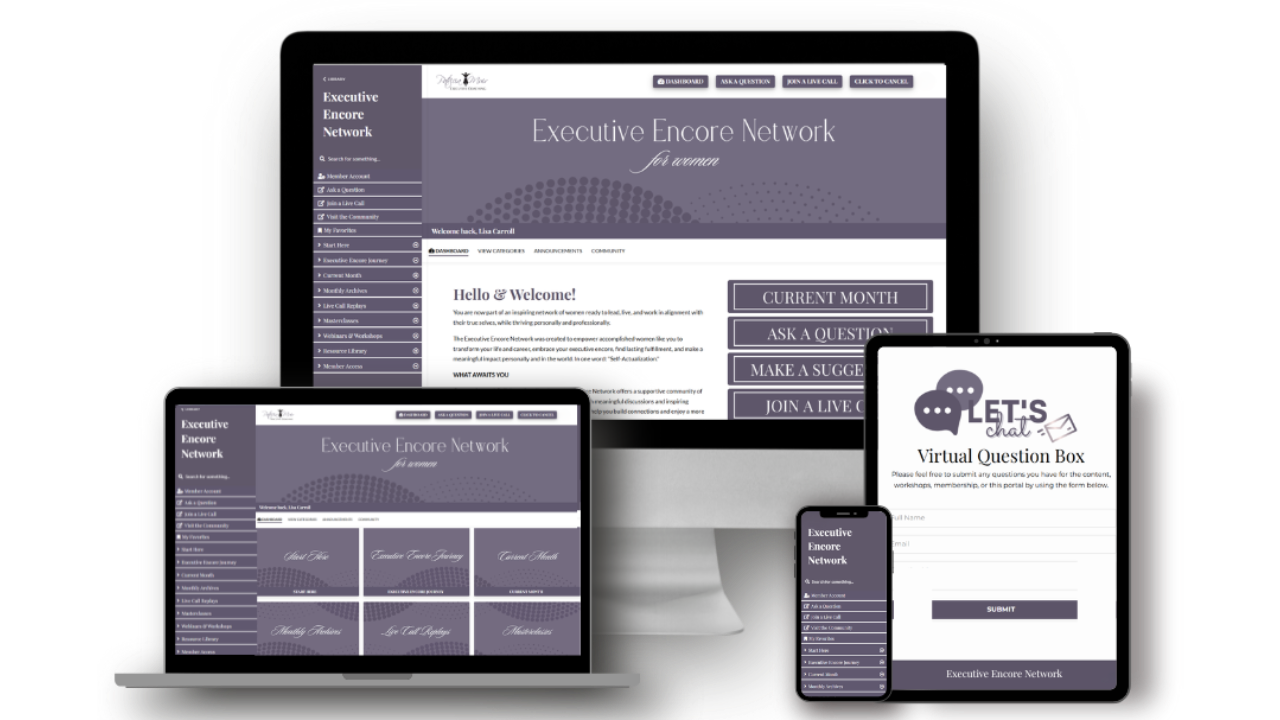
Gender Equity and the Double-Whammy
Sep 09, 2022Prelude: Recent media stories involving immoral actions targeting competent women (Lisa LaFlamme and Sanna Marin), prompted me to write a series of blogs addressing gender equity and the effect on our professional lives and our roles as leaders. We are now learning about the effect of the double-whammy (gender inequity and age bias) and the double-standard (gender inequity and lifestyle bias). As I read the flurry of articles, social media posts, and opinions, I encourage women of all ages and phases of life to not internalize and introject these examples of hostile sexism, ageism, and questioning of personal choice. Let's address any perceived social injustice with our power of choice. Let's not allow it to consume our energy and our commitment to finding fulfillment.
Gender Equity in Your Professional Life
Finding our way through the pandemic has required intense focus coupled with openness to explore what our organizations and lives will look like short-term and long-term. For many of us in leadership roles, keeping the lights on has been priority one – at work and at home.
I have noticed that there are many leaders who have managed to keep the lights on and even reach the light at the end of the tunnel - without losing sight of the gender gap. Those leaders understand the advantages and moral values related to keeping gender equity on the table and biases in check. Unfortunately, these leaders remain the exception, rather than the norm.
Prior to the pandemic, the percentage of men and women employed in Canada and the United States was almost equal (respectively). Yet the ranks of leadership remained male-dominated and stagnant. Women remain underrepresented in positions of power and status. Most troubling is that the highest-paying jobs are the most gender-imbalanced. Or the highest paid women executives are being forced out.
Throughout my professional life, I have witnessed and studied how organizational barriers, workplace policies, and managerial actions and inaction limit opportunities for even the most promising women.
Research to Validate Anecdotal Experience
There are currently two critical books that draw on research that validates my anecdotal experience.
- In the new book, Glass Half-Broken1, authors Colleen Ammerman and Boris Groysberg share their research on the gender gap in the United States. They reveal how women are squeezed from the leadership pipeline through their entire careers, and for a wide variety of reasons. According to the authors,
“The gender imbalance at the top still remains, even in many women dominated industries such as health care and education, where men are still more likely to be found in leadership and executive roles.”
- In the book The Authority Gap: Why Women Are Still Taken Less Seriously Than Men, and What We Can Do About It2, Mary Ann Sieghart draws on a wealth of research from academic studies and polling data to analyze and deconstruct the pervasive underestimation of women’s competence. Sieghart goes deep into the way women are belittled, undermined, questioned, mocked, talked over, and generally not taken seriously in public and professional life. The underestimation of their competence begins early with social conditioning that is deep-rooted and self-perpetuating. It follows and haunts girls and women throughout their personal and professional lives.
The Outliers
Fortunately, there are organizations, like those I choose to work with now, that are bridging the gender gap and expanding their awareness of the double-whammy: sexism and ageism. Many are led by women entrepreneurs who fairly value the capabilities and contributions made by women of all ages and phases of life. Their actions are not driven by DEI rhetoric, policies, and inauthentic strategies like grey washing. They are doing the hard work - examining the structures and systems that need to change or that need an overhaul. They understand intellectually and anecdotally what is at the root of successful and effective gender equity. They are increasing their awareness of the double-whammy.
Successful and Effective Gender Equity
Many larger organizations now have leaders, albeit siloed in different functions, who understand how gender equity at work is advantageous for everyone. Procurement and Human Resources are two functions that I work with on a regular basis.
Here are a few advantages that are well-known:
- Increased focus and innovation. Gender-diverse boards prioritize innovation more than male-dominated boards.
- Improved thinking and decisions. Studies show how diversity improves perspective, thinking, and problem solving.
- Greater access to talent. An organization with an authentic reputation for prioritizing and operating in the full spirit of diversity, equity, inclusivity, AND belonging will attract the best talent. At a great cost to all parties, BELONGING is so often missing from talent retention strategies. Furthermore, organizations that offer paths for advancement, that fairly sponsor, mentor, and promote women, and that build integrity-based healthy workplace cultures improve engagement and retention.
- More resilient workforce. According to Ammerman and Groysberg, a cruel irony is that while navigating workplace inequality, women develop passion and perseverance for long-term meaningful goals (aka grit and resilience) and strong external support networks – on their own - at their cost. These women are often more familiar with managing well through crisis and engaging their capacity, capability, and competence to rise to a challenge. Especially, today’s challenges. The organization is a benefactor without investment.
Our Next Steps
To make progress in gender equity within organizations of all types and sizes, and in our own professional lives and leadership, we must be systematic and avoid the distraction of the shiny-new-object syndrome in leadership and management programs. What we used to call "flavour-of-the-month" consulting. We need to build the foundation of an integrity-based culture first.
We must stay steadfast, go to the root cause, and begin with examining inequities. Let’s start with inequities in key areas of talent management. Let’s look at the top of the organization and the long-standing perpetuated stereotypes that create no-win situations for women who show up to lead and women who commit their professional lives to making the workplace and their community a better place for everyone.
References and Resources
- Glass Half-Broken: Shattering the Barriers That Still Hold Women Back at Work, Colleen Ammerman and Boris Groysberg
- The Authority Gap: Why Women Are Still Taken Less Seriously Than Men, and What We Can Do About It, Mary Ann Sieghart
- Popular, award-winning TV news Anchor is fired. Was it the hair? Lisa LaFlamme Story, Washington Post
- Finland's Prime Minister just wants to be herself. Sanna Marin Story, The Guardian
Your Next Steps
- Receive Maestro's Encore blog in your inbox with VIP content and specific exercises, self-assessments, and self-assignments related to this topic and to accelerate your emotional well-being and resilience. Start with your 90-Day EQ Mini-Plan or the mini workbook Emotions Drive Performance: Triggers from Thinking to Results - Predispositions, Self-Handicapping, Self-Sabotage
-
Explore strategies for finding fulfillment in your work or your executive encore, finding fulfillment after 60. Schedule a 30-minute complimentary call to explore possibilities. On this call, we will get acquainted and discuss what outcome is important to you. I will explain the application process for working with me and how we would work together. By the end of the call, you will have a "quick-win" action plan.
Explore the connections I make with this topic and emotional intelligence. Contact me on LinkedIn. Or click to Get in Touch.
Next Steps
You don’t need to navigate your Executive Encore alone. Discover a better way to take charge of your experience.
- Schedule a 30-Minute Complimentary Executive Encore Call.
Ready to elevate your encore chapter?
- Join the Executive Encore Network for Women, a membership and community of supportive women ready to inspire and uplift. Subscribe to the Sunday Encore to begin your Executive Encore Journey and register for the next Tour to learn more.


